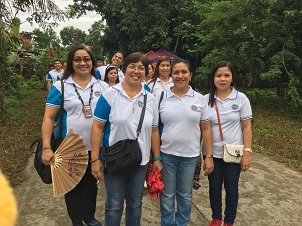BOAC, Marinduque – Aside from celebrating the feast day of the town of Torrijos, we also commemorates today the 116th Anniversary of the Battle of Paye in which a brave group of Marinduquenos led by Capt. Teofilo Roque defeated American forces in Sitio Paye, Balimbing, Boac, Marinduque. 116 years ago today, the people of Marinduque stood up together and rejected foreign domination and imperialism.
The Battle of Paye
Marinduque marks the Battle of Paye Day every July 31, one of two historical holidays commemorating the revolutionary struggle on the island in 1900 during the Philippine-American War. The Paye episode was described as a “skirmish” in American journals (Wells). Local accounts refer to it as a “battle”. Paye is a sitio of Brgy. Balimbing in Boac’s Ilaya-side.
Birtle describes the Paye episode in the following terms:
“In fact, the American hold over Marinduque was quite tenuous. Not only were the two companies of the 29th USVs poorly led, but with fewer than one hundred men at each location neither garrison could adequately protect itself and undertake offensive operations at the same time.

Moreover, Bates did not deem the garrison important enough to rate anything more than sporadic naval support. Without a ship to transport men and relay messages, the two outposts could not readily support one another. Coordination was further impeded by Manila’s failure to appoint an overall commander for the island.
The precariousness of the American position became evident on 31 July, when Teofilo Roque’s Guerrilla ambushed one of Lieutenant Wells’ rare forays into the countryside. Roque’s force wounded two Americans and captured two others before the patrol escaped.
That night the victorious guerrillas set fire to a portion of Boac in an effort to drive the Americans out. In this they failed, though many of Boac’s inhabitants fled, leaving the town virtually deserted. The episode also succeeded in paralyzing Company A, which retired to the church, venturing out only twice over the next two months.”
Birtle also described what followed six weeks later in the famous “Battle of Pulang Lupa”. The Battle of Pulang Lupa is considered the first major victory of Filipinos over the Americans during the second phase of the Philippine Revolution.
Writes Birtle:
“On 11th September, Shields decided to take advantage of a visit by the gunboat U.S.S. Villalobos. Leaving Lieutenant Wilson and forty-one men to hold Santa Cruz, he loaded fifty-one enlisted men, a hospital corps-man, and his black servant onto the gunboat and sailed to Torrijos, disembarking that evening. The next day he had his first contact with insurgent forces since his company had been on the island, dispersing a band of twenty guerrillas and destroying their cartel.
On the thirteenth (September), Shields led his detachment into the mountains with the intention of returning to Santa Cruz. Well informed about Shields’s movements, Shields walked right into the ambush. A fire fight ensued for several hours before Shields ordered a retreat into a covered ravine. What began as a slow withdrawal quickly turned into a race down a rocky stream bed, as the Americans scrambled to escape the pincers that were moving to surround them (until) Shields fell seriously wounded.
After ordering that a message be passed to the senior NCO to lead the command out of the closing trap, Shields raised a white flag to surrender himself and the other wounded… the entire force lay down its arms. All told, the Insurgents killed four Americans and captured fifty, six of whom, including Shields, were wounded.
After months of hiding, Abad in a few short hours had destroyed nearly a third of the entire American garrison on Marinduque.
Confirmation of Shields’s defeat sent shock waves through the American high command. The episode was one of the worst reversals suffered by U.S. forces in the Philippine War.”
Source and courtesy: Text from Eli Obligacion, Marinduque Rising
Photos: Girl scout camping by Mildred Hernandez Macarang and Local officials parade by Ma Dahlia Jandusay
